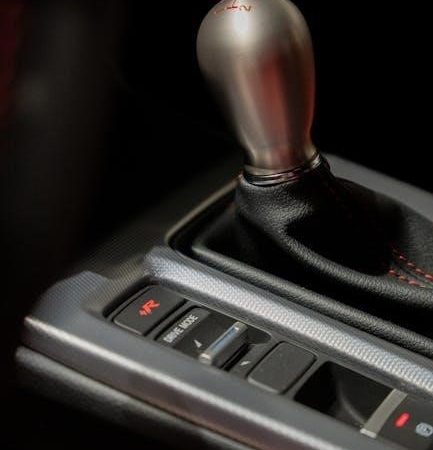A front-wheel drive (FWD) manual transmission system transfers engine power to the front wheels, offering improved fuel efficiency and compact drivetrain design compared to rear-wheel drive systems․
1․1 What is FWD (Front-Wheel Drive)?
Front-Wheel Drive (FWD) is a drivetrain configuration where the engine’s power is transmitted exclusively to the front wheels․ This setup typically features a transverse engine layout, reducing driveline power loss and enabling a compact design․ FWD systems are widely used in smaller vehicles due to their efficiency and space-saving benefits․
1․2 Evolution of Manual Transmissions in FWD Vehicles
Manual transmissions in FWD vehicles have evolved significantly, from basic systems to advanced designs like sequential and automated manuals․ Early FWD systems focused on simplicity, while modern iterations integrate electronics for smoother operation․ This progression enhances efficiency and driver experience without compromising the compact drivetrain layout inherent to FWD vehicles․

Components of a FWD Manual Transmission
The FWD manual transmission system comprises the clutch, gearbox, driveshaft, and differential, working together to enable manual gear shifting and efficient power delivery to the front wheels․
2․1 The Role of the Clutch in FWD Manual Transmissions
The clutch is essential in FWD manual transmissions, enabling the driver to disconnect engine power from the gearbox during gear shifts․ This allows smooth transitions without grinding gears, preventing mechanical damage․ By temporarily separating the engine from the drivetrain, the clutch facilitates seamless control over acceleration and deceleration, enhancing overall driving performance and efficiency in FWD vehicles․ Proper clutch operation is critical for optimal vehicle function․
2․2 Gearbox and Drivetrain Layout
In FWD manual transmissions, the gearbox is typically transverse-mounted, aligning with the engine and differential in a compact layout․ This design minimizes drivetrain length and reduces power loss, enhancing efficiency․ The drivetrain components, including the gearbox and differential, are integrated into the front axle, enabling a smaller overall package and improved weight distribution, which is ideal for smaller vehicles and urban driving conditions․
2․3 Driveshaft and Differential in FWD Systems
In FWD systems, the driveshaft is absent, as power is transmitted directly from the transverse-mounted gearbox to the front wheels through the differential․ This eliminates the need for a long driveshaft, reducing weight and improving fuel efficiency․ The differential distributes power between the front wheels, ensuring smooth operation and optimal traction, while its compact design contributes to the overall efficiency and space-saving layout of the drivetrain․
3․1 Sequential Manual Transmission (SMT)
A Sequential Manual Transmission (SMT) operates without a clutch pedal, simplifying gear shifts․ Drivers select gears sequentially via a lever, eliminating the need for manual clutch operation․ This design enhances shifting speed and reduces driver effort, making it ideal for high-performance applications․ SMTs are commonly found in specialized cars and motorcycles, offering precise control and a streamlined driving experience․
3․2 Automated Manual Transmission (AMT)
An Automated Manual Transmission (AMT) uses electronics to automate gear shifting, eliminating the need for a clutch pedal․ The system automatically engages and disengages the clutch, simplifying driver interaction․ AMT combines the efficiency of a manual gearbox with the convenience of automatic shifting, offering smooth transitions and reduced driver effort․ It is well-suited for urban driving and integrates seamlessly with FWD drivetrains for enhanced performance․
3․4 Traditional Manual Transmission
A traditional manual transmission requires the driver to manually shift gears using a clutch pedal and gearshift․ This system offers precise control over gear changes, enhancing fuel efficiency and driver engagement․ It is the original design, providing a direct connection between the driver and the vehicle, and is favored for its simplicity, cost-effectiveness, and performance in FWD vehicles․

Advantages of FWD Manual Transmission
FWD manual transmissions enhance fuel efficiency, reduce driveline power loss, and offer a compact design, making them ideal for urban driving and smaller vehicles․
4․1 Improved Fuel Efficiency
FWD manual transmissions often achieve better fuel economy due to reduced driveline power loss․ The transverse engine and compact drivetrain minimize energy expenditure, while manual gear control optimizes engine RPM usage, enhancing efficiency compared to automatics․ This design reduces weight and friction, allowing more power to reach the wheels, which is particularly beneficial in urban driving conditions where fuel efficiency is crucial․
4․2 Reduced Driveline Power Loss
FWD manual transmissions minimize driveline power loss by eliminating the need for a rear driveshaft․ The transverse engine layout and compact drivetrain reduce energy loss through fewer components and shorter power transfer paths․ This design ensures more of the engine’s power is delivered directly to the front wheels, enhancing overall efficiency and performance compared to rear-wheel drive systems․
4․3 Compact Drivetrain Design
FWD manual transmissions enable a compact drivetrain design by integrating the engine, gearbox, and differential into the front axle․ This layout eliminates the need for a separate rear drivetrain, freeing up interior space and reducing overall vehicle weight․ The transverse engine configuration further contributes to a more space-efficient design, making FWD systems ideal for smaller vehicles and urban driving environments․

How FWD Manual Transmission Works
A FWD manual transmission operates through driver interaction, using a clutch pedal and gear shifter to manually select gears, delivering power to the front wheels efficiently․
5․1 Driver Interaction: Gear Shifting and Clutch Operation
Driver interaction in FWD manual transmissions involves pressing the clutch pedal to disengage the engine from the gearbox, allowing manual gear shifts via the shifter․ The clutch pedal enables smooth transitions between gears, while the shifter selects the desired gear ratio․ Proper coordination between clutch release and accelerator input ensures efficient power delivery to the front wheels, optimizing performance and control․
5․2 Power Delivery to the Front Wheels
In FWD manual transmissions, power is delivered from the transverse-mounted engine through the gearbox and directly to the front wheels via the differential․ The absence of a driveshaft allows for a more compact drivetrain design, reducing driveline power loss․ This configuration efficiently transfers power, enhancing fuel efficiency and space utilization, making it ideal for modern vehicles․
5․3 Gear Ratios and Their Impact on Performance
Gear ratios in FWD manual transmissions significantly influence vehicle performance․ Lower gear ratios enhance acceleration in low-speed conditions, while higher ratios improve fuel efficiency at higher speeds․ Optimal gear ratio selection balances acceleration and efficiency, ensuring smooth power delivery․ Modern transmissions often feature multiple gear ratios to cater to diverse driving conditions, enhancing overall drivability and responsiveness in FWD vehicles․
Future Trends in FWD Manual Transmission Technology
Advancements include integration of automated systems, hybrid transmission options, and lightweight materials to enhance efficiency and performance while maintaining driver engagement in FWD vehicles․
6․1 Integration of Advanced Electronics
The integration of advanced electronics in FWD manual transmissions enhances control and precision․ Automated gear shifting, adaptive transmission software, and real-time monitoring systems improve efficiency and responsiveness, ensuring smoother power delivery while maintaining driver engagement in modern vehicles․
6․2 Development of Hybrid and Electric FWD Manual Transmissions
The development of hybrid and electric FWD manual transmissions combines traditional manual controls with electric motor assistance, enhancing efficiency․ These systems integrate advanced energy recovery and compact drivetrain designs, optimizing performance and reducing emissions while maintaining driver engagement․ This innovation aligns with the evolving demands for sustainable and efficient powertrains in modern vehicles․
Driving Tips for FWD Manual Transmission Vehicles
Master smooth acceleration and gradual gear changes to maintain traction․ Avoid aggressive acceleration to reduce torque steer․ Use lower gears for uphill climbs to enhance control and stability․
7․1 Mastering Clutch Control
Mastering clutch control is essential for smooth operation of FWD manual transmissions․ Gradual clutch release prevents jerky starts, while feathering the clutch at low speeds enhances control․ Avoid riding the clutch, as it accelerates wear․ Practice slow-speed maneuvers to refine pedal feel, ensuring seamless transitions between gears and minimizing drivetrain strain․
7․2 Optimal Gear Shifting Techniques
Optimal gear shifting in FWD manual transmissions involves smooth, deliberate movements․ Shift before hills or when slowing down to maintain control․ Use the clutch fully to avoid grinding gears, and transition between gears with light, precise movements․ Early shifting reduces wear on components, while avoiding over-revving enhances engine longevity․ Smooth acceleration and consistent gear changes maximize efficiency and drivability in FWD vehicles․

Challenges and Limitations of FWD Manual Transmissions
FWD manual transmissions face challenges like torque steer, which can affect handling during acceleration․ Weight distribution and driveline power loss may also limit performance and stability in certain driving conditions․
8․1 Torque Steer and Its Effects
Torque steer occurs when uneven power delivery from the front wheels causes the vehicle to pull sideways during acceleration․ This phenomenon is particularly noticeable in FWD vehicles with high-torque engines, leading to reduced directional stability and increased driver fatigue․ It can result in an unpredictable steering feel, especially under heavy throttle application or on uneven surfaces, affecting overall driving comfort and control․
8․2 Weight Distribution and Handling
Front-wheel drive manual transmissions often result in a heavier front axle due to the concentration of engine, gearbox, and drivetrain components․ This weight distribution can lead to understeer during cornering and reduced agility compared to rear-wheel drive systems․ However, it also provides better traction in certain conditions, such as inclement weather, by placing more mass over the driving wheels, enhancing stability and control in straight-line driving scenarios․
Maintenance and Repair of FWD Manual Transmissions
Regular maintenance of FWD manual transmissions involves inspecting the clutch, gearbox, and drivetrain․ Addressing issues early prevents costly repairs and ensures optimal performance over time․
9․1 Common Issues and Solutions
Some common issues in FWD manual transmissions include worn clutch components, gearbox oil leaks, and differential wear․ Solutions involve replacing faulty parts, tightening connections, and ensuring proper lubrication․ Regular inspections can help identify these problems early, preventing major breakdowns and maintaining smooth operation․ DIY repairs are possible for minor issues, but complex problems may require professional expertise․
9․2 DIY vs․ Professional Servicing
DIY servicing for FWD manual transmissions can include basic inspections, fluid changes, and minor repairs․ However, complex issues like gearbox overhauls or differential repairs often require professional expertise․ While DIY can save costs, improper techniques may lead to further damage․ Professional servicing ensures precision and reliability, especially for critical components․ Balancing cost and expertise is key to maintaining optimal performance and longevity․
FWD manual transmissions remain a vital component in modern vehicles, offering efficiency, compact design, and advanced technology integration, making them a practical and performance-oriented choice for drivers․
10․1 The Role of FWD Manual Transmissions in Modern Vehicles
FWD manual transmissions play a significant role in modern vehicles by balancing performance and efficiency․ They offer improved fuel economy, reduced driveline power loss, and a compact drivetrain design․ With advancements like automated manuals and sequential gearboxes, FWD manuals enhance driver engagement while maintaining practicality․ Their integration of advanced electronics ensures they remain relevant in the evolving automotive landscape, catering to both enthusiast and everyday drivers effectively;
